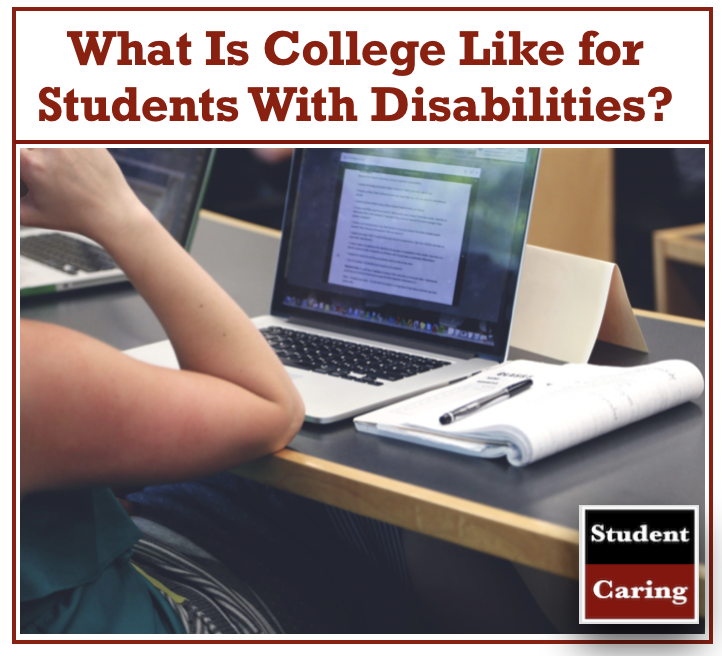
https://www.pexels.com/photo/notes-macbook-study-conference-7102/
If you’re one of the millions of college students seeking to improve your life through higher education, you know that being in school is no easy task. Traditional and non-traditional students alike all spend long hours working on essays, projects, and studying for exams, in addition to time spent in the classroom. Often times, students do this while balancing families, and part or full-time jobs; sometimes students do many of these things while managing a disability.
Whether a student has a physical or mental disability, this adds an extra obstacle to being a student that comes with its own particular set of challenges. However, to ensure that college is as fair and equitable as possible for all students, regardless of disability, there are laws that exist to level the playing ground and to protect students with disabilities.
Legal Rights and Protections
Students with disabilities are protected under a few different laws, one of which is the Americans with Disabilities Act(ADA), which was passed in 1990. It considers a person with a disability as someone who has a physical or mental impairment that limits one or more major life activities; such as walking, talking, hearing, speaking, learning, and working. Physical and mental disabilities include visual or hearing impairments, as well as mental and emotional illnesses.
These protections extend to any disability that can prevent students from having the same opportunities as able-bodied and neurotypical students. These laws require that all colleges and universities abide by the ADA or risk a discrimination lawsuit. Without these protections, that are meant to protect both children and adults from discrimination, the significant portion of the population that suffers from disability would be unable to get ahead.
Another law meant to help provide equity in schools is the Individuals with Disabilities Education Act (IDEA), which ensures K-12 students with disabilities have the same opportunities as others. This act addresses specific protections for students; however, in an attempt to reduce the number of regulations and guidance documents at the federal level, United States Secretary of Education Betsy DeVos announced her department was rescinding 72 different guidance documents relating to the rights of disabled students.
Although rescinding these documents does not change the protections for students with disabilities, it does remove a valuable resource for helping to understand the act. This decision was faced with concern from several disability advocacy groups in the U.S., who recognize that any action that makes it more difficult for people who are disabled to access protection is a step in the wrong direction. This could make it more difficult for disabled students to get into college.
Classroom Accommodations
Teachers who work with disabled students are required to modify their coursework if needed to accommodate students who would otherwise be unable to keep up with the coursework due to their disability.
If eligible, students can receive classroom accommodations that include:
- Audio-recorded texts of course materials
- Sign language or other effective methods of making lectures or orally recited materials available to those who are deaf or hard of hearing
- Classroom equipment that is adapted for use by students with manual impairments
- Physical facility modifications like ramps, curb cuts into the sidewalk, and hand controls
- Interpreters, readers, note takers, computer-assisted transcriptions, listening devices, and telecommunication
- Additional time to complete tests, coursework, and graduation requirements
- Replacement of non-essential courses towards degree requirements
However, unlike the protections for high school students, students at the college level must seek out the protections the school offers for themselves. The responsibility of following through with providing the necessary documentation, as well as informing the administration and teachers is put on the students.
On top of these accommodations, assistive technology is also becoming more prevalent in the classroom to help students with disabilities. This can help provide students with more options for accommodations at the university level, which often demand more of students than a standard high school education does. College classes often require students to move from one area of campus to the other; as well as to learn complex material that can be difficult to understand in the limited time they give you.
Whether the accommodations are speech-to-text software that help students who struggle with reading and communicating, or electronic math worksheets that can help disabled students understand the material at their own pace, these technologies are important for equity in the classroom.
Being a college student with disabilities can be extremely stressful and difficult. No matter what the disability is, it adds an extra obstacle on top of the challenge that college classes are to begin with. Therefore, students with disabilities need to ensure they are taking full advantage of the accommodations that their university has to offer. These accommodations are not making college easy, they are simply making it accessible for students who already have an extra set of challenges in life.

0 Comments